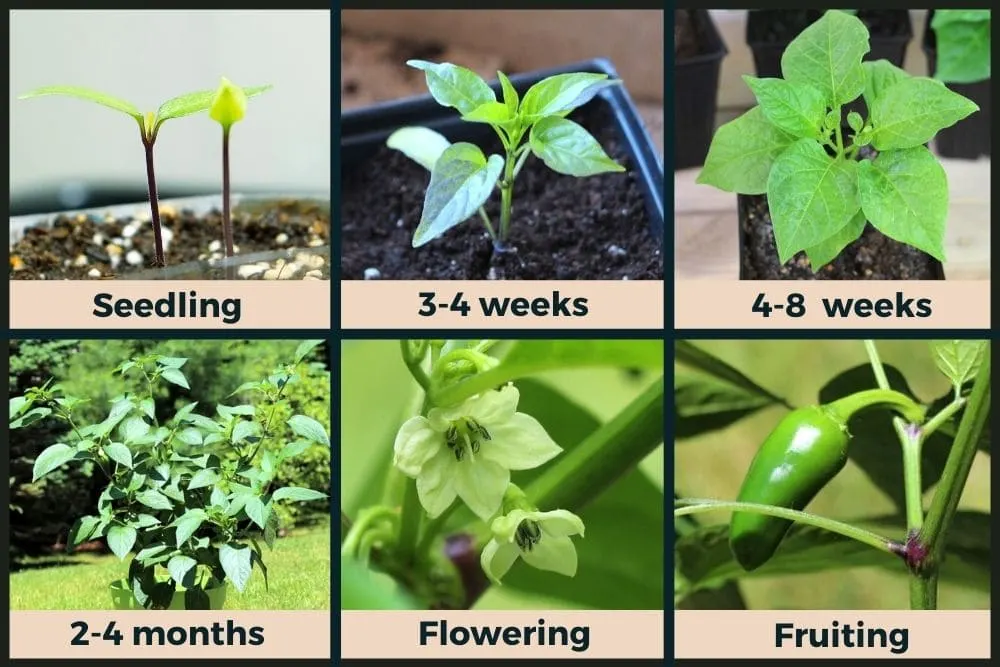Introduction
Cultivating your own jalapeños from seeds is a rewarding endeavor that allows you to experience the joy of gardening and savor the spicy delight of homegrown peppers. However, understanding the intricacies of seed germination is crucial for a successful harvest. This comprehensive guide will delve into the intricacies of jalapeño seed germination, exploring the optimal conditions, timeline, and troubleshooting tips to ensure your gardening journey thrives.
![Jalapeno Seeds 101 Complete Guide [Care+Harvesting]](https://gardenerpick.com/wp-content/uploads/2020/11/jalapeno-seeds-768x512.jpg)
Image: gardenerpick.com
Phases of Jalapeño Seed Germination
The journey of jalapeño seeds from dormancy to seedling marvels encompasses three distinct phases:
- Imbibition: In this initial stage, the seeds absorb moisture, plumping and softening their outer shells.
- Radicle Emergence: As hydration progresses, the radicle, the first visible root, emerges, marking the beginning of root development.
- Cotyledon Development: The radicle’s emergence is soon followed by the emergence of cotyledons, embryonic leaves that sustain the seedling until true leaves emerge.
Optimal Conditions for Germination
Providing ideal conditions is paramount for successful jalapeño seed germination:
Moisture:
Keep the soil moist but not waterlogged. Consistent moisture promotes root development and prevents premature drying.

Image: atonce.com
Temperature:
Jalapeños thrive in temperatures between 70-80°F (21-27°C). Soil temperature sensors can aid in monitoring and maintaining the desired range.
Light:
While germinating seeds prefer darkness, exposing seedlings to indirect light stimulates photosynthesis, promoting leaf growth.
Soil:
Jalapeños prefer well-draining soil with a pH between 6.0 and 6.8. Sandy loam or garden soil amended with compost provides an ideal medium.
Germination Timeline
Under optimal conditions, jalapeño seeds typically germinate within 7-14 days:
Day 1-3:
Seeds absorb moisture, swelling noticeably.
Day 4-7:
Radicle emerges, signaling the onset of root growth.
Day 8-10:
Cotyledons emerge, marking the start of leaf development.
Day 11-14:
Seedling develops true leaves, indicating successful germination.
Troubleshooting Germination Issues
Despite meticulous care, germination issues may arise. Here’s how to troubleshoot:
No Germination:
Check soil moisture, temperature, and light exposure.
Slow Germination:
Consider using a seed mat or heating pad to increase soil temperature or adding kelp extract to stimulate growth.
Mold or Fungus:
Reduce watering frequency and ensure the growing medium drains well.
Leggy Seedlings:
Provide more light and consider transplanting seedlings into deeper soil.
How Long To Germinate Jalapeno Seeds
Conclusion
Germinating jalapeño seeds may appear daunting, but understanding the process and providing optimal conditions can lead to a fruitful harvest. By adhering to the guidelines outlined in this comprehensive guide, you can nurture your jalapeño seeds into thriving seedlings, paving the way for zesty homegrown peppers that will add a spicy kick to your culinary creations.